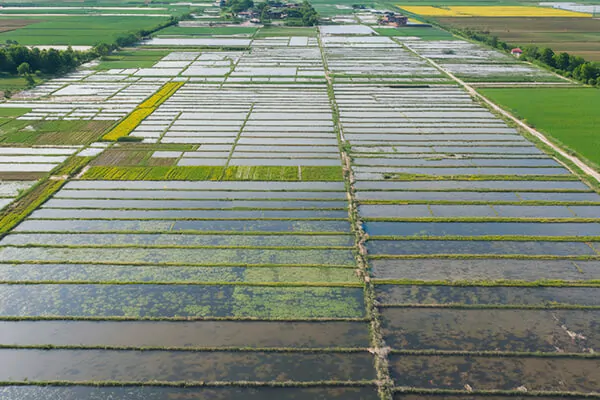I was chatting with a friend the other day, and we both wondered: what’s the difference between basa and tilapia? If you’ve been curious, too, you’re in good company.
Basa and tilapia are popular white fish but differ in origin, taste, texture, and nutrition. Basa hails from Southeast Asia and has a soft texture and mild flavor, while tilapia is farmed worldwide, offering a firmer texture and versatile taste suitable for various dishes.
So, let’s dive into what sets these two fish apart.
Where Do Basa and Tilapia Come From?
Understanding their origins can shed light on their unique characteristics.
Basa originates from the Mekong River in Vietnam, thriving in freshwater environments. In contrast, tilapia is gly farmed in fresh and saltwater, especially in countries like China, including our YANGHUA Fishery.
This geographical difference influences their farming practices and availability.
Basa: The River Native
Basa, also known as Pangasius, is primarily farmed in the freshwater rivers of Southeast Asia. The natural river environment contributes to its delicate texture and subtle taste.
Tilapia: The Global Farmer
Tilapia is one of the most widely farmed fish in the world. Its adaptability allows it to be raised in ponds, lakes, and rice fields across China, Africa, and the USA. At YANGHUA, we specialize in high-quality tilapia farming to meet international demands.
| Fish | Origin | Farming Environment |
|---|---|---|
| Basa | Vietnam, Southeast Asia | Freshwater rivers |
| Tilapia | Global (China, Africa, USA) | Ponds, lakes, rice fields |
How Do Their Tastes and Textures Compare?
Taste and texture can make all the difference in your culinary creations.
Basa offers a soft, buttery texture with a mild flavor, making it ideal for delicate dishes. Tilapia has a firmer texture and a slightly stronger taste, perfect for grilling and frying.
Your choice might depend on the recipe you’re planning.
The Gentle Basa
Basa’s mild flavor absorbs spices well, making it a favorite for soups and stews. Its softness adds a delicate touch to any dish but requires gentle cooking to prevent it from falling apart.
The Versatile Tilapia
Tilapia’s firm flesh holds up well in various cooking methods. Whether you’re grilling, frying, or baking, tilapia can handle it, making it a versatile option for different cuisines.
Which Is More Nutritious?
Both fish are healthy choices, but there are slight differences.
Tilapia is higher in protein, while basa is lower in calories and fat.
Depending on your dietary needs, one might be more suitable.
Nutritional Breakdown
| Nutrient (per 100g) | Basa | Tilapia |
|---|---|---|
| Calories | ~90 | ~129 |
| Protein | 13g | 26g |
| Fat | 4g | 3g |
Choosing for Health
If you’re watching your calorie intake, basa might be your go-to. For those seeking more protein, tilapia could be the better choice.
How Do Their Farming Practices Differ?
Farming methods impact not only the quality but also the sustainability of the fish.
Basa is often farmed in large river systems in Vietnam, sometimes raising concerns about water quality. Tilapia farming varies globally, with many farms like YANGHUA adhering to strict quality standards.
Knowing your supplier is critical.
Basa Farming Concerns
While basa farming provides economic benefits in Vietnam, it’s important to source from reputable farms that follow environmental regulations to ensure the fish is safe and sustainably raised.
Tilapia Farming Excellence at YANGHUA
At YANGHUA Fishery, we prioritize sustainable and responsible farming practices. With certifications like FDA, BRC, and ASC, we ensure our tilapia meets the highest quality and safety standards, providing you with fish you can trust.
Conclusion
The basa vs tilapia debate boils down to your personal preferences and needs. Basa offers a delicate flavor for gentle cooking, while tilapia provides versatility with a firmer texture. Both are nutritious choices, so whether it’s for your business or your next meal, you can’t go wrong with either.



